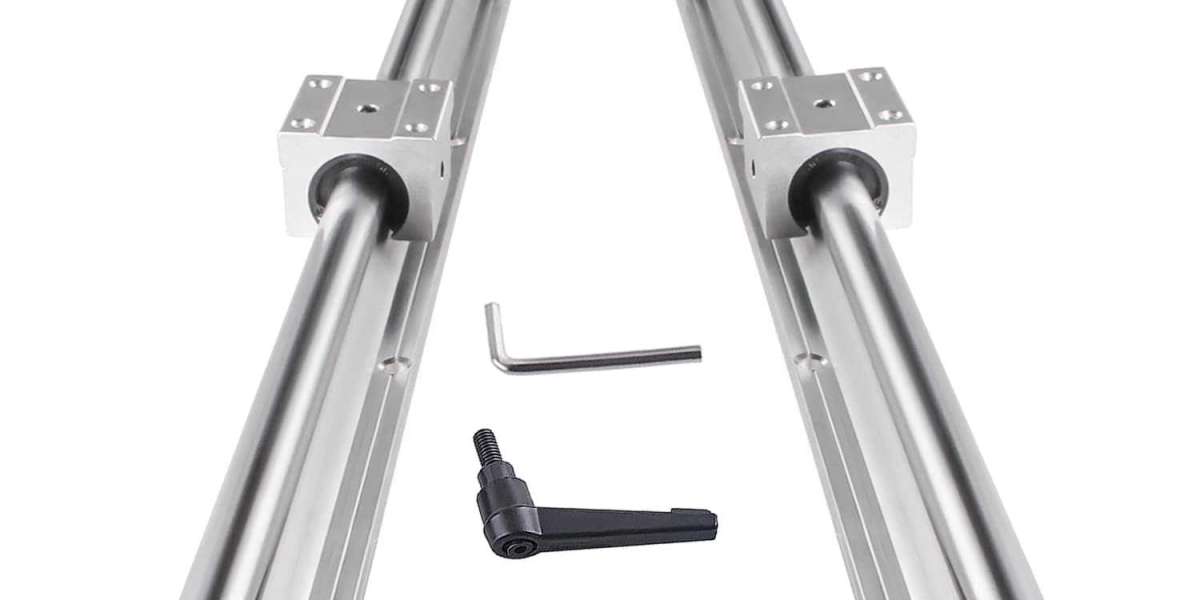In the world of machinery and engineering, precision is paramount. Whether you're designing a CNC machine, a conveyor system, or an automated manufacturing process, the components you choose can significantly impact the performance and accuracy of your project. Among these critical components are guide rails. Guide rails play a fundamental role in ensuring the smooth and precise movement of various mechanisms. However, selecting the right guide rails for your project can be a complex decision. In this comprehensive guide, we will delve into the key factors to consider when choosing guide rails to help you make an informed decision.
Understanding the Role of Guide Rails
Before we dive into the selection process, it's essential to understand the role guide rails play in various applications. Guide rails are linear motion components that provide support and guidance to moving parts. They are designed to prevent undesirable motion, such as deflection, and maintain the desired path of movement. Essentially, guide rails ensure that components move accurately and smoothly, which is crucial for precision machinery and systems.
Types of Guide Rails
Guide rails come in various types, each designed for specific applications. Let's explore some common guide rail types:
- Linear Guide Rails: These are the most common type of guide rails, known for their precision and high load-bearing capacity. Linear guide rails are ideal for applications requiring precise linear motion, such as CNC machines and 3D printers.
- Dovetail Guide Rails: Dovetail guide rails feature a trapezoidal-shaped groove that provides excellent accuracy and resistance to lateral forces. They are commonly used in woodworking and certain tooling applications.
- V-Guide Rails: V-guide rails have a V-shaped groove and are designed for applications wherecomponents need to move along a defined path. They are often used in conveyor systems.
- Round Guide Rails: Round guide rails, as the name suggests, are cylindrical in shape and provide rotational motion guidance. They are commonly used in applications like optical and medical equipment.
- Box Guide Rails: Box guide rails offer excellent rigidity and are suitable for heavy-load applications. They find use in large machining centers and other heavy machinery.
Key Considerations for Choosing Guide Rails
Now that we've covered some guide rail types, let's explore the essential considerations when choosing guide rails for your project:
- Load Capacity: One of the most critical factors is the load capacity required for your application. Calculate the maximum load that the guide rails will need to support, and select rails that exceed this value to ensure safety and longevity.
- Speed and Precision: Consider the speed and precision requirements of your project. Linear guide rails are ideal for high-precision applications, while V-guide rails may be suitable for slower-moving conveyor systems.
- Environmental Conditions: Evaluate the environmental conditions in which the guide rails will operate. Factors like temperature, humidity, and exposure to contaminants can impact the choice of materials and coatings for the guide rails.
- Maintenance: Think about the ease of maintenance. Some guide rail types may require more frequent lubrication or cleaning than others. Choose guide rails that align with your maintenance capabilities.
- Budget: While precision and quality are essential, budget constraints are also a consideration. Determina budget for your guide rails and seek options that provide the best value within that budget.
- Compatibility: Ensure that the guide rails you choose are compatible with other components in your system, such as linear bearings or sliders.
- Longevity: Consider the expected lifespan of your project. High-quality guide rails may have a longer lifespan and require fewer replacements over time.
- Supplier Reputation: Research and select a reputable supplier or manufacturer for your guide rails. Quality and support can vary between suppliers.
Guide Rails vs. Ball Joints: Understanding the Differences
Guide rails and ball joints are both essential components in machinery and mechanical systems, but they serve different purposes and have distinct characteristics. Let's explore the differences between guide rails and ball joints:
- Function:
- Guide Rails: Guide rails primarily provide linear motion guidance. They are designed to ensure the precise and straight-line movement of components. Guide rails are commonly used in applications where maintaining a specific path of motion is critical, such as CNC machines, 3D printers, and conveyor systems.
- Ball Joints: Ball joints, on the other hand, facilitate rotational motion and flexibility. They connect two parts while allowing them to pivot in multiple directions. Ball joints are commonly used in suspension systems of vehicles, allowing the wheels to move up and down while steering.
- Type of Motion:
- Guide Rails: Guide rails restrict motion to a linear path. They prevent lateral movement and ensure components move accurately along a defined line.
- Ball Joints: Ball joints enable a wide range of motion, including rotation and angular movement. They provide flexibility and articulation in systems where movement in multiple directions is required.
- Shape and Structure:
- Guide Rails: Guide rails typically have a linear shape and consist of a rail or track along which another component, such as a carriage or slider, moves. They often have grooves or channels to guide the motion.
- Ball Joints: Ball joints consist of a ball-like stud attached to one component that fits into a socket on another component. This ball-and-socket design allows for multidirectional movement.
- Applications:
- Guide Rails: Guide rails are commonly used in precision engineering applications where maintaining a straight and accurate path of motion is essential. Examples include linear slides in industrial machines and the rails used in woodworking equipment.
- Ball Joints: Ball joints are prevalent in automotive and mechanical systems that require flexibility and movement in various directions. They are found in vehicle suspension systems, steering linkages, and robotic arms.
- Load-Bearing Capacity:
Guide Rails: Guide rails are typically designed to bear heavy loads in a linear direction. They offer high load-bearing capacity along their intended path of motion.
Ball Joints: Ball joints are generally used for lighter loads and are better suited for applications where flexibility and articulation are more critical than load-bearing capacity.
- Maintenance:
Guide Rails: Guide rails often require less maintenance as they operate in a linear, predictable motion. Lubrication and cleaning are the primary maintenance tasks.
Ball Joints: Ball joints may require more frequent maintenance, including lubrication and inspection, due to the complexity of their multidirectional movement.
In summary, guide rails and ball joints are distinct components with different functions and applications. Guide rails guide linear motion with precision, while ball joints enable flexibility and multidirectional movement. The choice between them depends on the specific requirements of the mechanical system or machinery in which they are used.
Conclusion: Making the Right Choice
Choosing the right guide rails for your project is a crucial decision that directly impacts performance and precision. By carefully considering factors like load capacity, speed, environmental conditions, maintenance, budget, compatibility, longevity, and supplier reputation, you can make an informed choice. Remember that there is no one-size-fits-all solution; the ideal guide rails for your project depend on your specific requirements. Taking the time to assess these factors will lead to a successful and precise engineering endeavor, ensuring that your machinery or system operates at its best.
In the world of engineering, precision is everything. When it comes to guide rails, choosing the right type and specifications can make all the difference in achieving the precision and performance your project demands. With the insights provided in this guide, you're now equipped to make an informed decision and elevate the quality of your engineering projects. Whether it's linear guide rails, dovetail guide rails, or any other type, the right choice will set you on the path to success.







